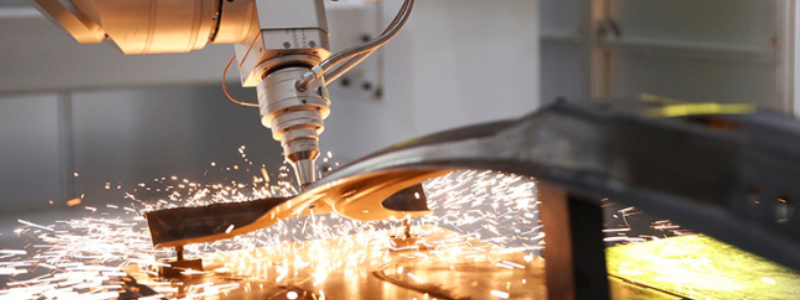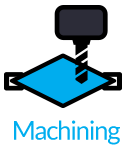How Is Laser Cutting Used in The Medical Sector?
Tooling 2000 | 17th June 2020

3D Laser Cutting Machine
Laser cutting is used for a broad range of different sectors, including the production of medical instrumentation, and highly sensitive medical devices. Laser cutting has helped make a huge difference in making manufacturing more efficient, and more cost-effective while keeping and (in some areas) improving the safety standards.
In this blog, we are going to be looking at the different ways that laser cutting is used within the medical sector.
Why Is Laser Cutting Used in The Medical Sector?
Laser cutting is often used in the medical industry for the creation of different medical devices; some of which can be extremely small like a heart valve and stent. (A stent is a tube that is designed to be inserted into a vessel or passageway to keep it open.) This means that the quality and reliability of the devices produced must be up to the appropriate standard.
There are several management standards that are applicable to medical device manufacturing. The most common medical device manufacturing standards include the following:
- ISO 9001
- ISO 13485
- ISO 14001
- ISO 50001
- OHSAS 18001/ ISO 45001
- ISO 27001
Manufacturing Medical Devices
The medial sector needs equipment that is made for the job at hand. This means manufacturing equipment that can be used everywhere from doctors’ surgeries to operating theatres. Unlike the traditional methods of manufacturing the different medical devices needed, laser cutting provides a quick, cost-effective solution. But how?
The laser cutting process reduces the number of hours needed to complete a task, in turn reducing the need for costly man-hours. This is important because medical engineers are always trying to find new ways to improve the medical devices they already use, in order to make them more efficient and cost-effective; as well as creating new devices that can be manufactured as quickly as possible. This is where laser cutting comes in. Laser cutting has the ability to manufacture equipment more precisely, resulting in machinery and tools that can do the job faster and better.
Laser Cutting Allows for Creative Solutions
With the continued development of the laser cutting process, medical engineers have been able to create more complex solutions that they were unable to achieve before using the traditional methods. This is because, as discussed before, laser cutting has the ability to manufacture devices/equipment more precisely in turn, enabling these complex solutions designed by the medical engineers to come to life.
You may well be thinking, the more intricate designs must cost a lot more but in fact, they don’t. From the most basic, to the most complex of designs, the laser cutting technology allows for all types of designs to remain affordable. The reason for this that you’re using fewer materials, meaning less wastage which naturally means a decrease in costs. In turn, helping to keep up with the high demands of the NHS and the private healthcare sector.
Capacity Increased
Increasing the capacity of production can be a costly business, and with the increasing demands on the public and private healthcare sectors, such costs can be restricting to medical organisations and healthcare suppliers directly. This means that they are unable to provide the treatment required as quickly or efficiently as they would like. So, what’s the solution?
Laser cutting. With lasers, medical manufacturers can upgrade current technologies, allowing them to increase their capacity and the rate of treatments and technology that can be developed. But how? This is down to a few factors, the main one being the time it takes to manufacture different medical devices and equipment at a faster rate while still keeping the high quality needed; unlike traditional cutting which are unable to manufacture high-quality equipment as fast as laser cutting can.
This is important because of the constant increase in the demand for medical devices and equipment from both the public and private sectors. Being able to manufacture these medical devices quickly and efficiently will allow you to increase your capacity to match and even stay ahead of the high demands for your products.
To Conclude
Laser cutting is a technology that is still advancing, meaning the future is open to a lot of new possibilities. As it continues to advance, it will become increasingly effective and increasingly affordable, but even now there are significant advantages. Laser cutting has already played a huge part in the advancement of a range of technologies, including medical applications.
Tooling 2000 has 24 years of experience working in the laser cutting industry; if you are interested in learning how we can help improve the manufacturing process of your medical components, then please get in touch with a member of the Tooling 2000 team today on 0121 242 2000 or send us an email on office@tooling2000.co.uk. We look forward to hearing from you.

Five-Axis Laser Cutting Machine
Have A Question? Get In Touch:
Tooling 2000 have been delivering an end to end in-house service since 1996, providing the complete presswork and sheet metal engineering solutions to customers including Rolls Royce, Jaguar and Glen Dimplex. These brands have all got one thing in common, and that’s a commitment to delivering the very best each and every time. That’s why they come to us – because they know we insist on the same consistently high standards.
Our purpose built central Birmingham facility is home to the latest technology and a team of experts who combine years of experience with a ruthless attention to detail. Starting with the earliest plans and moving through initial design to try-out and beyond, everything we produce combines the minimum use of material with maximum quality. Whether you come to us for 5-axis laser cutting, computer aided design, CNC machining or a combination of everything we offer, our experts will work with you to deliver exactly what you need. From prototyping and reverse engineering to full scale production, Tooling 2000 create robust, custom made tools that are of the highest quality for the automotive, rail or construction sectors and beyond. Let us know what you need and we’ll work to make it happen.



Get in touch
Email: office@tooling2000.co.uk or call +44 (0) 121 242 2000



